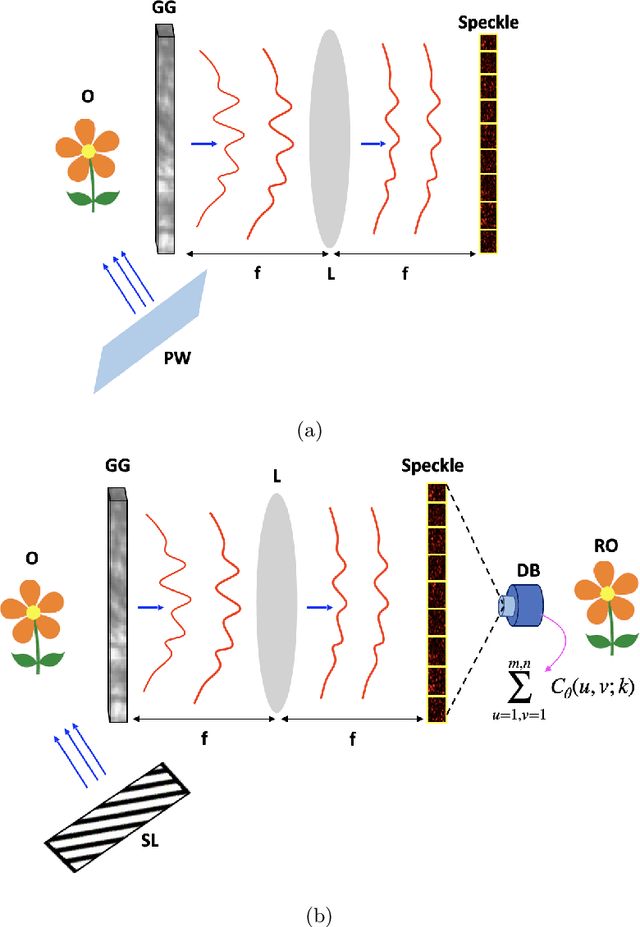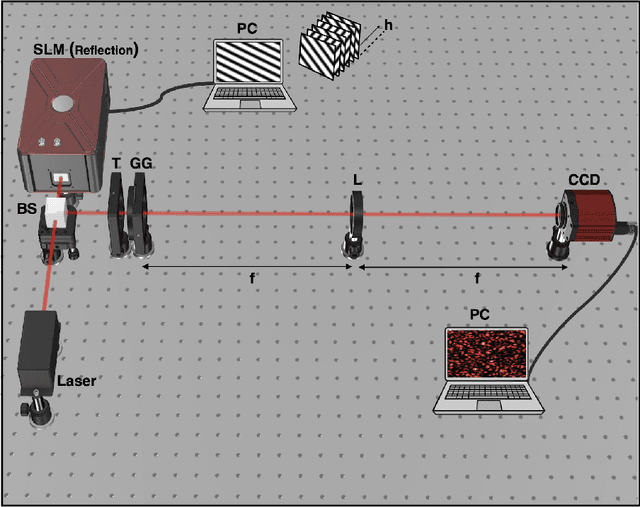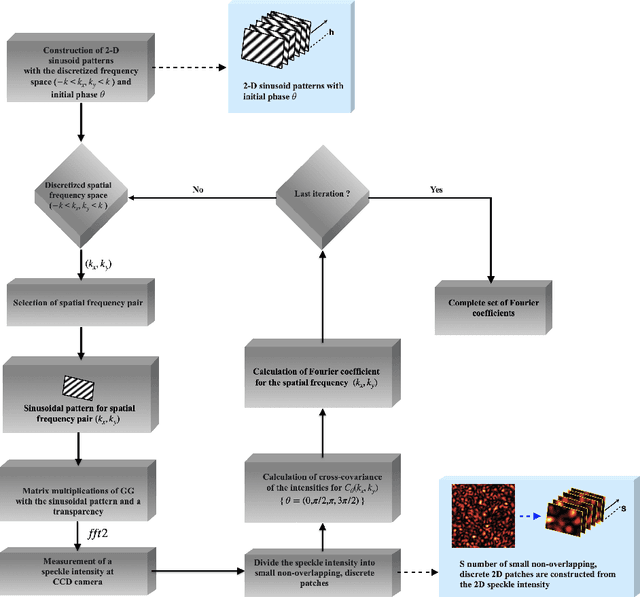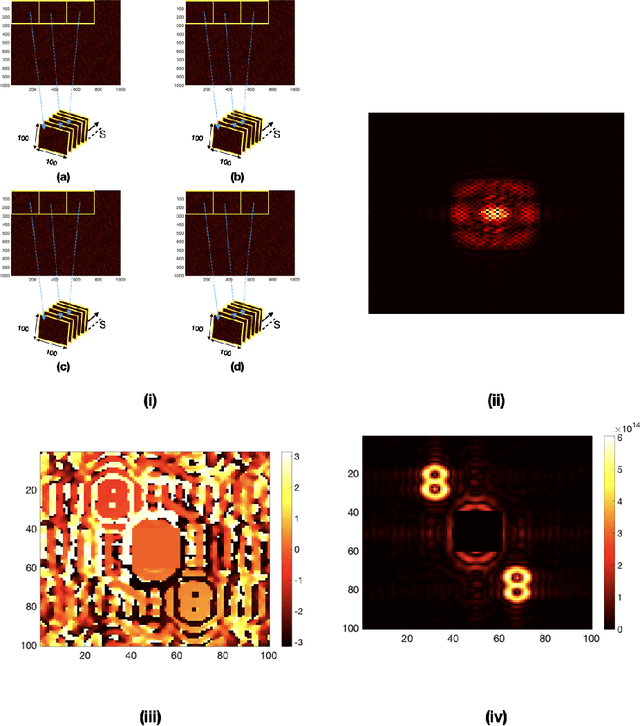Rakesh Kumar Singh
Randomness assisted in-line holography with deep learning
Mar 30, 2023Abstract:We propose and demonstrate a holographic imaging scheme exploiting random illuminations for recording hologram and then applying numerical reconstruction and twin removal. We use an in-line holographic geometry to record the hologram in terms of the second-order correlation and apply the numerical approach to reconstruct the recorded hologram. The twin image issue of the in-line holographic scheme is resolved by an unsupervised deep learning(DL) based method using an auto-encoder scheme. This strategy helps to reconstruct high-quality quantitative images in comparison to the conventional holography where the hologram is recorded in the intensity rather than the second-order intensity correlation. Experimental results are presented for two objects, and a comparison of the reconstruction quality is given between the conventional inline holography and the one obtained with the proposed technique.
Reconstructing complex field through opaque scattering layer with structured light illumination
May 19, 2022



Abstract:The wavefront is scrambled when coherent light propagates through a random scattering medium and which makes direct use of the conventional optical methods ineffective. In this paper, we propose and demonstrate a structured light illumination for imaging through an opaque scattering layer. Proposed technique is reference free and capable to recover the complex field from intensities of the speckle patterns. This is realized by making use of the phase-shifting in the structured light illumination and applying spatial averaging of the speckle pattern in the intensity correlation measurement. An experimental design is presented and simulated results based on the experimental design are shown to demonstrate imaging of different complex-valued objects through scattering layer.
 Add to Chrome
Add to Chrome Add to Firefox
Add to Firefox Add to Edge
Add to Edge